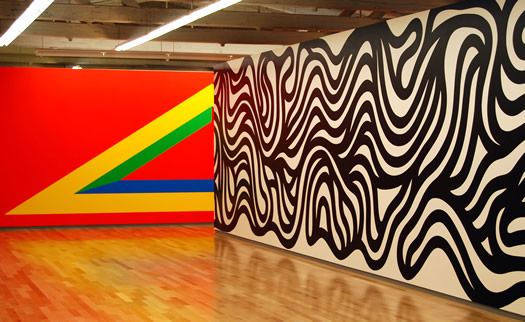Sol LeWitt was born in Hartford, Connecticut, on September 9, 1928. As a child, he attended art classes at the Wadsworth Atheneum in Hartford. LeWitt completed a B.F.A. at Syracuse University in 1949 and then served in the United States Army in Korea and Japan during the Korean War. In 1953, he moved to New York, where he took classes at the Cartoonists and Illustrators School and did production work for Seventeen magazine. LeWitt subsequently worked in graphic design in the office of architect I. M. Pei in 1955-56.
In the early 1960s, LeWitt made paintings and reliefs before concentrating, in the mid-1960s, on three-dimensional works based on the cube. For these, he used precise, measured formats, such as grids and modules, and systematically developed variations. His methods were mathematically based, defined by language, or created through random processes. He took up similar approaches in works on paper.
The artist's first solo show took place in 1965, at the John Daniels Gallery in New York. In the second half of the 1960s, LeWitt's art was shown in group exhibitions of what would soon be known as Minimalism; among these were the 1966 exhibitionPrimary Structures at the Jewish Museum in New York. During this period, he taught at several New York schools, including New York University and the School of Visual Arts.



No comments:
Post a Comment